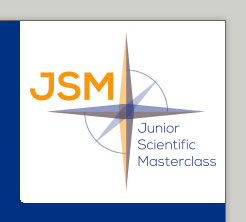Edit researchproject
In this email you'll find a link that you can use to edit the project on the website.
Only researchers that belong to the project can edit their project.
Please use the selectlist below to indicate which researcher you are. When you click the button 'Edit project', an email will be sent to the email of the selected researcher.
Project properties
| Title | Effectiveness of open abdomen as compared to CPPL for the treatment of peritonitis |
|---|---|
| Keywords | abdomen laboratory animals peritonitis |
| Researchers |
prof.dr. H.C. van der Mei prof. dr. H.J. Busscher dr. P.K. Sharma |
| Type of project | Pilot project (year 2 or 3) of Stage Wetenschap / Researchproject |
| Nature of the research | |
| Fields of study | biomaterials surgery |
| Background / introduction |
|---|
|
Peritonitis is the inflammation and infection of peritoneal membrane, which is a multilayered membrane that lines the abdominal cavity (parietal peritoneum) and the organs (visceral peritoneum) of the digestive system contained therein. Secondary and tertiary peritonitis is caused due to spillage of indigenous flora from the gastrointestinal tract in the otherwise sterile peritoneal cavity due to abdominal trauma. The reason of abdominal trauma could be appendicitis, perforation of the bowel or colonic diverticulum. The treatment starts with operative intervention. During this procedure the focus of infection (perforation) is closed, solid and liquid inoculum (feces, hemoglobin, fibrin clots, pus etc) are removed and the whole cavity is washed and rinsed to clean the peritoneal cavity from any material, including infectious microbes, which might give rise to infection. Following the operating, fluid and necrotic debris reaccumulate within the cavity and bacteria may continue to proliferate. To avoid reopening the patient CPPL is performed where the abscesses and pus are drained out and the cavity is slowly rinsed with suitable rinse fluid. |
| Research question / problem definition |
|---|
| To compare the effectiveness of open and closed peritoneal lavage. Secondly to evaluate the effect of number of inlets during the CPPL. |
| Workplan |
|---|
| prof.dr. R.J. Ploeg will be demonstrating the surgical and CPPL procedure in a patient, as it is performed at the UMCG. Later a similar procedure will be employed in rats to perform the experiments. As a first step the infecting microbial cells will be modeled with fluorescent polystyrene particles. A known count of these particles will be injected in the left lower quadrant of the rat peritoneal cavity, simulating fecal peritonitis. The particles will be left in the cavity to spread all over the cavity and attach to the peritoneal membrane, simulating the spread of infection. The rats will be divided in 3 groups. Group I rats will be given open peritoneal lavage, group II will be given CPPL with 1 inlet and 1 outlet and the third group will be given CPPL with 2 inlets and 1 outlet. The particles, which are rinsed out during the lavage, will be later counted. All the experiments will be performed at the Central animal lab facility, A. Deusinglaan 50. The preparations for the experiments and later analysis of lavage fluid will be done at Bioadhesion, BME, A. Deusinglaan 1. |


